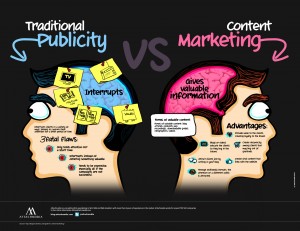Creating Business Content Through Segmentation
 As you’re reading this, small businesses are out there creating business content. Many of them are harvesting content that’s been contracted to external sources. Some are repurposing content that’s been written before, or using automation services to reimagine content from another business. Some are developing a careful content strategy that uses available business resources and a calendar. Some aren’t worried about their content strategy at all.
As you’re reading this, small businesses are out there creating business content. Many of them are harvesting content that’s been contracted to external sources. Some are repurposing content that’s been written before, or using automation services to reimagine content from another business. Some are developing a careful content strategy that uses available business resources and a calendar. Some aren’t worried about their content strategy at all.
Upon first glance, the businesses that are leveraging zero to minimum new content in their businesses are the ones that appear the least competitive. However, the effort it takes to create business content does not always guarantee success. If you’re not segmenting you content to match the buying cycle of your users, your content could be deleted, passed over or generally disregarded each time you get a site visit or send a newsletter. And as most business owners out there know, wasted effort is wasted money.
Creating Business Content that Works
According to Social Media B2B, only 30% of companies generally categorize the content they have to offer based on their customer’s average buying cycle. This means that regardless of what buying stage customers are in, they’re getting the same content as everyone else.
Ask yourself this – does someone who’s already purchased need to be convinced to become a first-time customer? Wouldn’t it be better for customers who’ve made a purchase to get new offers or ‘returning customer’ specials? What about referrals?
If you haven’t segmented these different ways of looking at how your customers buy and what content they’d like to see, now is a great time to start.
The Benefits of Segmentation
Creating the right business content based on your customer buying cycle is about first understanding your cycle, then knowing how to segment your audience. If you don’t understand your cycle, marketing automation is a great way to get acquainted with how people are finding you and how to address each audience’s different needs.
Once you have that base set up, take a look at how you can break your customers into different audiences based on how and when they buy. Do you find that customers choose to go with you 8-10 days after you begin advertising? Then you should start sending customized emails to a deciding client segment within a week of initial contact. What about email marketing? If new clients don’t ever seem to open emails, segment your email list into a ‘returning’ or ‘current client’ list that gets special offers and information about your business.
If you don’t know how to begin the buying cycle definition or segmentation process, marketing automation services can help you. At Lead Liaison, we strive to help you understand your buying cycle with advanced tools and marketing data. Talk to us today about how we can help get your business to the next step!











